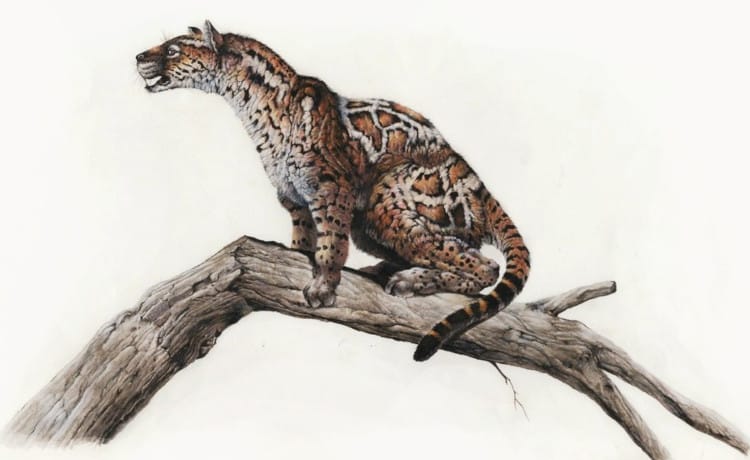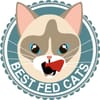Are House Cats Still Carnivores?
House cats belong to the order Carnivora: Felidae – a group of strict meat eaters. After roughly 10 000 years of domestication, the common house cat still shares close genetic links to its wild Middle Eastern ancestors. Plus they have retained their carnivore traits and hunting equipment!

We know that big cats in the wild are definitely carnivores. Over the years, their incredible hunting skills have been showcased on thousands of wildlife documentaries.
But have you ever looked at the cat in your lap and wondered if they really qualify as carnivores?
According to biologists and feline geneticists, the answer is clear cut:
...yes, the house cat is absolutely a carnivore!
Now, let’s explore this idea a little further and see why this classification still holds true – even after millennia of domestication and almost a century of eating commercial, man-made food. But, first things first.
...where does the term Carnivore originate from?
The origin of the term Carnivora and the word carnivore both have their roots in Latin words. Carõ, means flesh and vorāre, means to devour 1.
Notably, the order Carnivora is the fifth largest mammalian order. It comprises over 280 species – of which the house cat is one.
...the order Carnivora explained
Carnivores are classified on a scale that ranges from occasional to strict carnivores. On the one end is the omnivorous carnivores and on the other, obligate or strict carnivores, also referred to as hyper carnivores 2.
Omnivorous carnivores eat a variety of plant, fungal and animal foods 3, whereas the hyper or obligate carnivores eat a strict all meat diet 2.
...where do cats fit in?
Within the order Carnivora, every cat species – including the house cat – collectively form the family Felidae or what is more commonly known as felids or felines 1.
All members of Felidae are hyper or obligate carnivores. This means that all cats across the globe, from the smallest to the largest, are strict meat eaters.
...felids are old world, highly specialised carnivores
Cats are very ancient species that have specialised in predation for millennia. Notably, the Proailurus, Greek word for first cat, originated from Eurasia a reported 25 million years ago. This old world cat gave rise to all major felid lines that followed 4.

In more modern times, all cats across the globe – small and large species alike – have adapted to feed on an astonishing array of different animals that occur within their unique environments 5, 6.
And no two cat species eat the same diet – there is no one feline diet enjoyed by all cats.
...interspecies specialisation is very diverse
Even within the exact same habitat, cat species have evolved to prey on very specific animals. Lion have to provide for their pride and therefore favour large animals – buffalo, larger sized hoofed animals and even hippopotamuses 7.
Leopard – solitary hunters – specialise in smaller antelope, but will also take down primates and other small animals. Lion mostly would not view these same animals as worthwhile to expend energy on 8.
...intra-species specialisation is terrain bound
Even within the same species of cat, variances in habitat will lead to dramatic differences in diet 9. For instance, lion in more open regions will prey on savanna animals whereas lion in bushveld will prey on animals native to these parts.
Therefore, different groups of cats have adapted to very distinctive terrains and rely on the unique and seasonal fauna of that specific terrain 5, 6. The same can be said of small wildcat.
...unique terrains offer distinct prey
Where rabbit and hare are abundant, small wildcat species will prey on little else 10. However, in areas with dense rodent populations, small wildcat will mostly favour these.
Small wildcat species that have evolved in swamps and wetlands prey mainly on aquatic prey, such as fish, crustaceans and amphibians 6. Insular wildcat are known to eat mostly insects, ground nesting birds and their eggs.
...where do HOUSE cats fit in?
Even after almost 10 000 years of domestication, the common house cat still belongs to the order Carnivora 11. They continue to form an integral part of the family Felidae, meaning that the house cat is classified as an obligate or hyper carnivore.

However, over the past 90 years or so, the house cat’s instinctual all meat diet has been systematically replaced by processed, man-made commercial foods 12.
...so, how relevant is this classification then?
Completely! Even though cats have modified certain behaviours to live alongside humans, and even though they are able to survive on man-made diets, biologically they still remain obligate carnivores 11.
Not a single cat species – including domestic cats – has evolved to eat anything other than animal tissue.
The one thing we can say about these captivating creatures with resounding certainty, is that they are designed to eat only animal tissue. Even the cat in your lap! Given the chance, they will hunt.
...many small wildcat species still run wild
Apart from their closest progenitors, house cats also have a wide array of wild cousins. There are no less than 33 species of small wildcat 6 that populate almost every continent of the world.
The next post Meet the Wild Ancestors of the House Cat introduces their closest genetic ancestors. As you will see, their similarities are nothing short of astonishing!


References
1 Carnivora. (n,d,). In Wikipedia. Retrieved December 02, 2021, from https://en.wikipedia.org/ wiki/Carnivora
2 Carnivore. (n.d.). In National Geographic Society. Retrieved December 02, 2021, from https://www.nationalgeographic.org/encyclopedia/carnivore/
3 Omnivores. (n.d.). In National Geographic Society. Retrieved December 02, 2021, from https://www.nationalgeographic.org/ encyclopedia/omnivores/
4 Proailurus. In Wikipedia. Retrieved December 08, 2021, from https://en. wikipedia.org/wiki/Proailurus
5 Sunquist, M. E. & Sunquist, F. (2002). Wild cats of the world: The ultimate reference to every species worldwide. Chicago: University of Chicago Press.
6 Hunter, L. (2015). Wild cats of the world. London: Bloomsbury Publishing Plc.
7 Lion (n.d.) In Britannica. Retrieved December 08, 2021, from https://www.britannica.com/animal/lion
8 Revealing the leopard: What’s on the menu for leopards (2013). in Nature. Retrieved December 08, 2021, from https://www.pbs.org/wnet/nature/revealing-the-leopard-what-e2-80-99s-on-the-menu-for-leopards/6092/.
9 Braczkowski, A., Watson, L., Coulson, D., Lucas, J., Pieser, B. & Rossi, M. (2012). The diet of caracal, Caracal caracal, in two areas of the southern Cape, South Africa as determined by scat analysis. South African Journal of Wildlife Research, 42(2), 111 – 116.
10 Malo, A.F., Lozano, J., Huertas, D.L. & Virgós, E. (2004). A change of diet from rodents to rabbits (Oryctolagus cuniculus). Is the wildcat (Felis silvestris) a specialist predator? Journal of Zoology, 263(4), 401 – 407.
11 Driscoll, C.A., Menotti-Raymond, M., Roca, A.L., Hupe, K., Johnson, W.E., Geffen, E., Harley, E.H., Delibes, M., Pontier, D., Kitchener, A.C., Yamaguchi, N., O’Brien, S.J. & Macdonald, D.W., (2007). The Near Eastern origin of cat domestication , Science, 317, 519– 523.
12 Griffiths, S. & Ruish, D. (n.d.). Evolutionary nutrition for the cat. In Club Canine. Online booklet retrieved April 29, 2015. Shortened/revised version available from http://www.clubcanine.net/ evolutionary-nutrition-cats.shtml
Disclaimer
The information provided on the Bestfedcats.com website is educational and informational. We are here to give guidance on how to feed a properly balanced raw diet. We also offer advice on how to improve the diet of the modern house cat. Please note that we are not veterinarians. We are not here to give veterinary advice. Best Fed Cats will not be held responsible for any adverse reactions to your cat based on the information on our website. The health of your cat depends entirely on you. We expect you to use your knowledge of your cats, their circumstances and their health – in conjunction with a trusted veterinarian – to determine if any advice provided on this site is appropriate for your cats.

